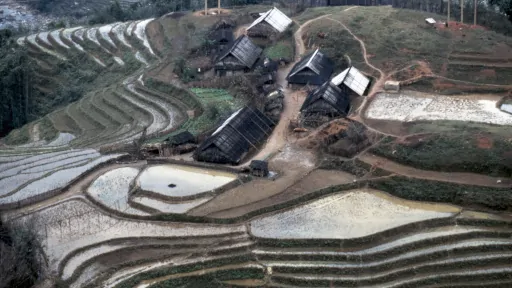Opinion Editorial Archive January, 2021: Build Back Indigenous

When John F. Kennedy famously announced, in the early 1960s, plans to go to the moon within a decade, he could not have known whether that was possible. He did know that such things are not easy but "they are hard." China confirmed last month that such things are hard by becoming only the third nation (after the United States and the former Soviet Union) to return moon samples to the Earth.
When Emmanuel Macron famously announced, almost 60 years later, that Notre Dame Cathedral would be rebuilt in five years, he would have known that was likely not possible. (The cathedral was still burning; no damage assessments had been done; it will actually take decades.)
Politicians continue to make outrageous claims. (Notwithstanding Kennedy's vision having been realized in the end.) One of them, currently in vogue, is that, post-Covid-19, the world will somehow build back better. I don't know what such a vague term means. Phrases such as 'net-zero' and 'carbon-neutral' are usually associated with the notion — so I suppose it is mainly about addressing climate change. Many industrialized countries have recently announced plans to reach some kind of climate-friendly milestone in the next ten to forty years. Given their failings on previous, similar promises, however, even a Swedish climate activist would have grounds to be skeptical.
I do know what it means to build back indigenous. Take Africa. In central Mozambique there is a national park named Gorongosa. Thirty years ago, the region was on the verge of ecological collapse (mainly due to civil war). But, for over a decade, it has been a model of not only conservation but of proactive restoration. That effort has been successful largely because of the application of regional indigenous knowledge.
Not far away, in Kenya, the indigenous Maasai people have been demonstrating for the past four years their ancestors' knowledge of how to conserve the land and its wildlife. Nashula Conservancy is the result. The entire habitat there has been saved from permanent loss and regenerated — an effort that earned the UNDP Equator Prize last year. We should not find this surprising. It was proclaimed at the Rio Earth Summit almost thirty years ago that indigenous knowledge was a necessary part of addressing climate change.
That proclamation makes even more sense when we consider that indigenous knowledge has been used for at least a hundred thousand years to build better in the first place. This month's photo may look idyllic, but the landscape was sculpted this way for practical reasons hundreds of years ago by the indigenous people of northwestern Vietnam. It has supported sustainable agriculture ever since. It is ironic that as stock markets were stimulated to record highs last year by the likes of five-nanometer microchips, the rest of us focused on the race to get the global population vaccinated because we treat nature unsustainably.
The world is slowly catching up with the Rio Earth Summit. (Or, perhaps like post-Brexit trade negotiators, is learning how to copy and paste policy documents from the 1990s.) There was good and bad news last month. In the United States, Deb Haaland was nominated to be the first indigenous Secretary of the Interior — a position that oversees public federal land. In Chile, it was decided to include indigenous representation in the drafting of a new constitution. And in Australia, the Rio Tinto mining company was ordered to build back indigenous land at the Juukan Gorge caves that it had previously destroyed for iron ore extraction. But, less than a week ago, indigenous environmental activists Félix Vásquez and Adán Mejía were murdered in Honduras.
We often demand to see strong evidence that an approach to a problem is working before we are ready to adopt it broadly. In the case of building back indigenous, that evidence is here already.
If you enjoyed reading this month's opinion editorial, please consider supporting independent, advertising-free journalism by buying us a coffee to help us cover the cost of hosting our web site. Please click on the link or scan the QR code. Thanks!

